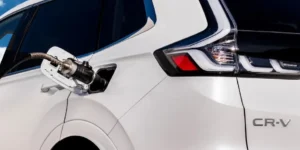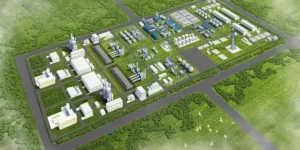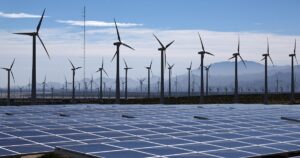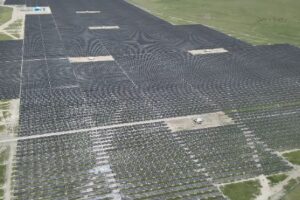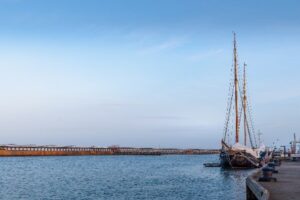INTERVIEW | ‘Our hydrogen-based green steel could be cost-competitive with dirty equivalents within ten years. Here’s how’
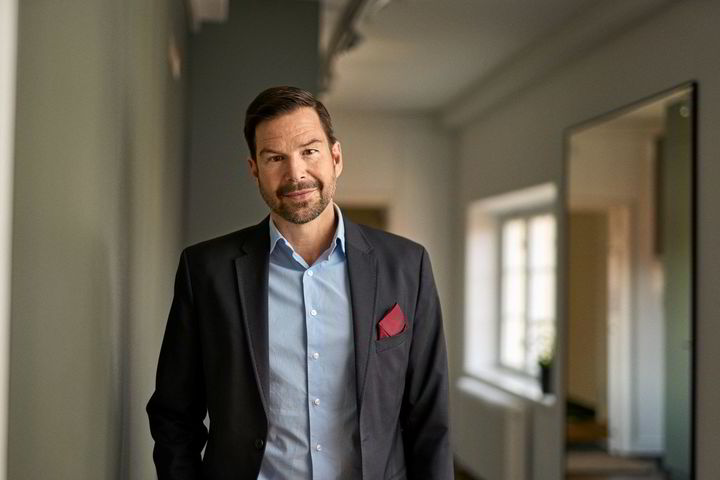
Green steel made with renewable hydrogen is significantly more expensive than its conventional equivalents today.
So how — and when — will it be able to compete with steel produced using fossil fuels?
The answer is fairly simple, according to Sweden’s H2 Green Steel, which is developing what is likely to be the world’s first commercial hydrogen-based green steel plant.
The EU’s newly launched Carbon Border Adjustment Mechanism (CBAM) has the potential to level the playing field in Europe — and it is an “essential” component of the company’s business model.
The CBAM tax imposed on industrial products imported into Europe is the key that has allowed the EU to roll back free carbon allowances handed out to domestic polluters, including producers of hydrogen, iron, ammonia and steel, explains Ola Hansén, director of public affairs at H2 Green Steel.
This means that for the first time, major European steel producers using coke-fired blast furnaces will be forced to pay for an ever-increasing portion of their greenhouse gas emissions, gradually reducing their cost advantage over those making “green steel” using green hydrogen and renewables-powered electric arc furnaces.
Article continues below the advert
This could have significant implications for one of the world’s most polluting sectors — steel production accounts for 8% of global greenhouse gas emissions — in one of its biggest markets.
For H2 Green Steel — which is developing a massive 700MW green hydrogen installation as part of its planned green steel mill in Boden, Sweden — CBAM and the corresponding ETS reform is almost existential.
“CBAM is essential to our business model,” says Hansén, admitting that without the initiative, bringing Boden to fruition would be “much more difficult”.
“It is also a political signal that the transformation is… where we’re heading,” he explains. “Of course, it’s about the business case itself, but it’s also about political security. This is really happening. We’re entering towards a society where it will cost to emit.
“In the long term, anything that is fully or, in our case, 95% decarbonised is going to be at a competitive advantage in the future. So I wouldn’t say [Boden would have been] impossible but it is really an important factor.”
By 2034-5, CBAM and the corresponding phase-out of free ETS (emission trading system) allowances to the steel industry — which won’t be completed for another ten years — could itself bridge the green hydrogen premium, but that would only happen ten years after the Boden plant is scheduled to come on line.
H2 Green Steel’s near-zero-emissions steel would be produced by making and then using renewable hydrogen to “reduce” raw iron-ore pellets into so-called direct reduced iron (DRI), or sponge iron, which can then be made into green steel using a renewable energy-powered electric arc furnace.
The Swedish firm has not yet taken a final investment decision (FID) on the plant, which is scheduled to come on line in 2025, but it has raised €5.3bn ($5.6bn) of finance for it, comprising €1.8bn in equity funding and €3.5bn in debt. It has also already started construction.
Much of this funding is underpinned by a swathe of offtake agreements with big names such as Mercedes-Benz, Scania and Porsche, equivalent to 60% of the plant’s annual output of 2.5 million tonnes of green steel in its first phase. In total, 40% of capacity has been pre-sold under binding agreements, with 20% under term sheets.
All have been sold at prices indexed to one of three steel market benchmarks — hot-rolled coil, cold-rolled coil and hot dipped galvanised steel (see panel beneath table) — with a fixed “green premium” of between 20-30% added on top, Hansén tells Hydrogen Insight.
If all free allowances on the ETS were abolished today, the gap between the market price and the lowest green premium of 20% for hot- and cold-rolled steel could be bridged almost immediately, based on today’s emissions prices and contemporary steel prices (see table below).
| Market price of traditional steel* ($/tonne) | Green steel price when adding 20% green premium ($/tonne) | Green steel price when adding 30% green premium ($/tonne) | Carbon intensity of product made via coke-fired blast furnace (tonnes CO2e/tonne of steel) | Price of traditional steel when adding carbon cost of €80/tonne of CO2e | |
| Hot-rolled coil | 813 | 976 | 1,057 | ˜2 | 987 |
| Cold-rolled coil | 1,006 | 1,207 | 1,308 | ˜2.5 | 1,224 |
| Hot-dipped galvanised steel | 1,157 | 1,388 | 1,504 | ˜2.5 | 1,375 |
*based on MEPS data for August 2022
As the table shows, green hydrogen made with a 20% green premium would be cheaper than traditional hot- and cold-rolled coil today (and almost on par with hot-dipped galvanised steel), if the industry was subject to the ETS price today.
However, the 30% premium would still be a bridge too far, and would require an ETS price of about €112 for hot- and cold-rolled coil to be cost-competitive — or around €160 for hot-dipped galvanised steel.
Hot-rolled coil is the name of the process in which hot crude steel is pushed into a roller to flatten it out into a finished coil. It has an emissions intensity of around two tonnes of CO2 per tonne of coil, when the iron and steel is made in conventional coke-fired blast furnaces.
Cold-rolled coil is the process whereby hot-rolled coil is cooled and then further processed into a thinner product.
Hot-dipped galvanised steel is produced by metallurgically bonding steel with zinc to protect it from corrosion.
These last two steel types carry a slightly higher carbon intensity of about 2.5 tonnes per tonne of metal when powered by fossil fuels, due to the extra processing required.
But these extra steps also add a lot of value to the finished product, pushing up the market price significantly compared to hot-rolled coil. This subsequently increases the green premium (which is added as a percentage of the market price) — requiring a higher carbon price to bridge the gap.
Such carbon price increases are feasible— ETS allowances topped €100 earlier this year — and certainly possible within ten years.
As free allowances are gradually reduced, the price of carbon permits in the EU can be expected to rise, depending on how the EU manages the vast supply of reserve permits it has kept aside to protect the market from shocks.
And, of course, all of this depends on how the steel market itself evolves — and how H2 Green Steel manages its operations. The Boden plant is not 100% carbon free — as iron ore is being imported from abroad, and transported using fossil fuels — however, the company has committed to use a certain amount of scrap metal as feedstock, which would bring down lifecycle emissions of the finished product.
So what are CBAM and ETS reform, and why are they important to green steel?
Under present ETS rules, the EU sets a cap on the amount of carbon that can be emitted across the bloc for a set period, and emitters covered by the scheme must buy permits for every tonne of carbon they produce.
But in order to alleviate problems with carbon leakage — in which major industries move their operations to locations without such stringent carbon reduction rules; or in which cheaper, less regulated products are imported from abroad — the EU has been handing out set amounts of free allowances to some of its biggest polluters, so as not to put them at a competitive disadvantage to their foreign rivals.
Political pressure has been building on the EU for years to outlaw free allowances, and indeed the original plan was to phase them out by 2030. But unable to countenance losing its major industries, Brussels has instead come up with CBAM.
This tax on embedded carbon in certain products imported from abroad, which subjects foreign producers to the same level of carbon regulation as those in the EU, will ratchet up gradually at exactly the same rate as free allowances are phased out.
Launched in October this year, the initiative is the first of its kind in the world, but it is currently in a testing phase.
Import conventional steel into Europe today, and the only burden will be paperwork — a rigmarole of carbon accounting that would determine the embedded greenhouse gas emissions of the product. But import the same product into Europe in just over two years’ time and the burden will be more than just an accounting headache.
From January 2026, importers of an array of products, including steel, electricity, hydrogen and ammonia, will need to pay for each tonne of reported emissions, with prices indexed closely to ETS carbon allowances.
Ultimately, Hansén expects the CBAM and free allowance phase-out to result in a European steel market that is separate from the rest of the global steel trade, which he says suits H2 Green Steel as it is targeting mainly European markets.
But while CBAM/ETS reform may be enough to eliminate the green premium in the European market in time, margins are highly susceptible to a range of other factors, he explains.
“It really depends on where the ETS prices go,” Hansén tells Hydrogen Insight. “There are also different claims on the production costs for H2-DRI steel compared to conventional primary steel. It also [depends on] what kind of development and deployment we will have of renewable energy, electricity production and so on.”
The fact remains that the cost of any green hydrogen-based project still hinges on the availability of cheap renewable electricity. For green hydrogen production alone, electricity costs account for 70% of the final levelised H2 cost, more than electrolyser, finance and project costs combined.
For a green steel mill using renewable electricity to power 700MW of electrolysers as well as an electric arc furnace and other plant power needs, this cost equation is even more stark.
H2 Green Steel has secured around 40% of its power needs for Boden in long-term purchase agreements, with the rest procured later on in shorter contracts and on the spot market, meaning that the project could still fall prey to power price fluctuations.
The problem is mitigated by the fact that it is in close proximity to abundant hydroelectric power supply in northern Sweden, which explains the company’s confidence about producing H2-based steel competitively.
However, this is geographically specific. Existing steelworks in the industrial heartlands of central and western Europe will find renewable electricity to be scarce and more expensive.
The solution in most of these cases, says Hansén, is to split up the green steel supply chain, closing European ironworks and importing DRI from where renewable energy is abundant, such as Sweden or Canada.
“Make the green iron where the electricity is cheaper and then ship the green iron to where you have the steel plants, where you have the know-how and the existing infrastructure,” he said. “[This will] probably will be a combination of piping hydrogen [to DRI plants] or making your own hydrogen.”
H2 Green Steel is oversizing its DRI plant to accommodate the proposed second phase of the steel mill’s development to five million tonnes a year, which means that for some time it would have capacity to sell green iron on the open market.
The company has already signed an agreement with Rio Tinto, from which it will source iron ore pellets, to supply the mining group with hot-briquetted iron (HBI), a form of compressed DRI that is easy to transport, for onward sale.
However, Hansén does pinpoint some issues with CBAM, most significantly that unlike the ETS, it is limited to Scope 1 emissions, ie, those resulting from companies’ own operations, excluding Scope 2 emissions resulting from companies’ third-party suppliers.
The reason for this, according to the EU, is “to ensure administrative simplicity”, and it has pledged to consider expanding CBAM to include Scope 2 later on.
But this means that, for the moment, DRI made with electrolytic hydrogen that was produced using cheap coal-fired power would still count as “zero emissions” under CBAM — potentially putting EU manufacturers at a disadvantage, as Scope 2 emissions are included under ETS rules.
“You could set up a hydrogen electrolyser and a DRI plant but there’s no control of where the electricity comes from,” Hansén warns. “You don’t need to measure [associated power emissions], it could be coal-fired electricity going in. It could look really good from Scope 1, [but] if you take into account Scope 2, suddenly this is not really green steel in terms of emissions intensity.”
And domestically, current ETS rules also inadvertently discourage investment in low-emissions steel, he adds, as DRI isn’t yet included as a category of steel production eligible for free allowances — although legislation currently being drafted by the EU seeks to address this issue.
Hansén believes H2 Green Steel will not be too disadvantaged by these anomalies, as it will get enough ETS allowances to compete, but existing steel producers already in receipt of free allowances for their blast furnaces are faced with the perverse situation in which any investment in cleaner DRI technology would see them lose most of their free allowances.
Ultimately, however, even though companies such as H2 Green Steel want to eliminate the green premium for their products, Hansén believes it could also kickstart green steel production elsewhere in the world — another aim of CBAM.
“We have shown that you can get the green premium for steel in Europe,” he says. “We’re an example of this, with these agreements and when we get our final investment decision and start production, this should be a signal that, yes, this is a business opportunity. I believe that.”
